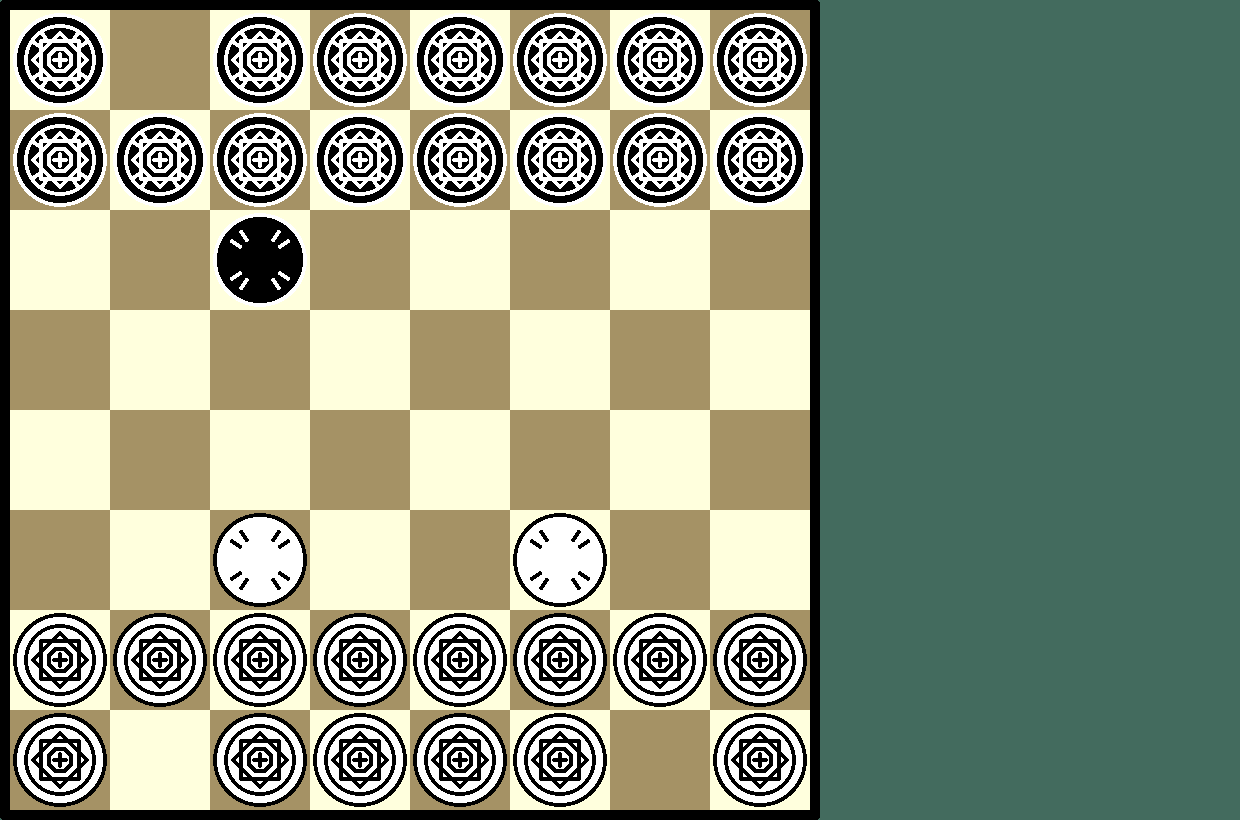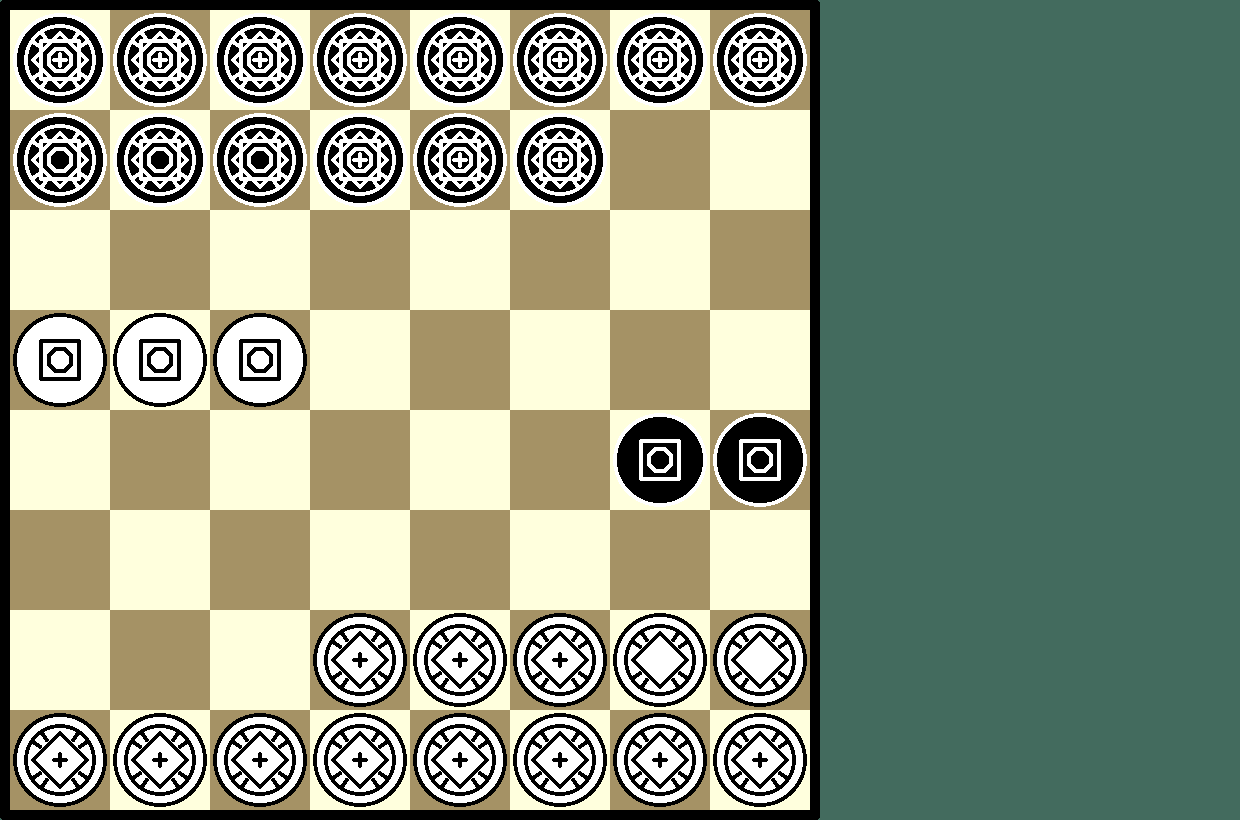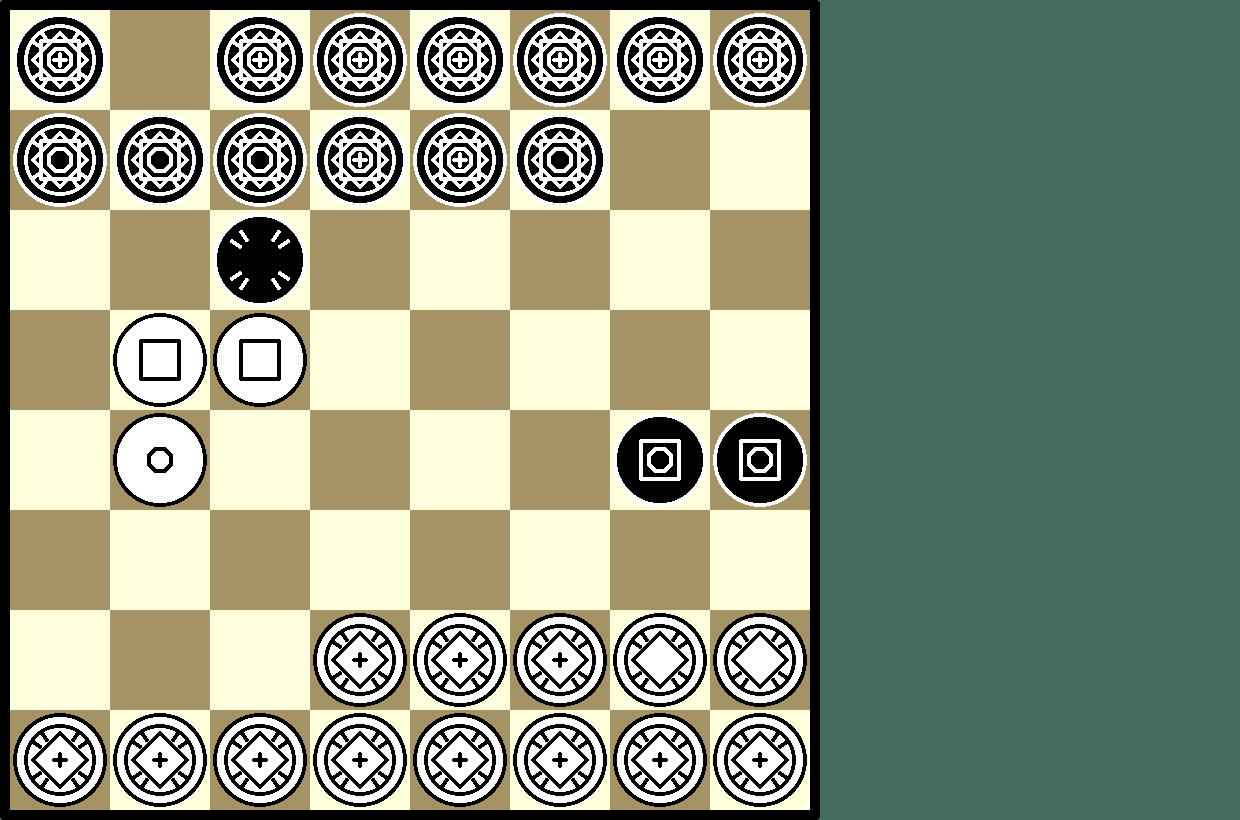
Entanglement Chess, aka Haft Schroedinger Chess (http://antumbrastation.com/haft-schroedinger-chess.html) is a chess variant implementing quantum mechanics without hidden information or randomness.
The core concept is that every single piece starts in a superposition of all possible piece types.
These pieces are entangled to the rules of chess. This means as pieces move, pieces eventually collapses to a single piece type.
For more information about the quantum mechanics behind the game, CrazyPenguin0111 has written an explanation here.
Note: Even though on the surface it seems like the game relies on quantum mechanics, the more formal definition does not use quantum mechanics at all. Indeed, no knowledge of quantum mechanics is required to play this game!
Here is a more formal definition of Entanglement Chess:
Consider a chess variant called "Modified Random Chess" or MRC for short.
Here are all the rules governing MRC:
Pieces use distinct symbols to represent piece types. Here are the piece type symbols individually.
From left to right: Pawn, Knight, Bishop, Rook, Queen, King

These piece symbols get overlayed on top of each other to represent the current piece possibilities.
From left to right: Pawn/Bishop/Queen, Rook/King, Queen/King/Promoted-Pawn[Knight/Bishop/Rook/Queen]
Note: Promoted Pawns show a dotted circle
Pieces in Entanglement Chess are all entangled to piece counts. As pieces move, they collapse into known identities.
When this happens, other pieces can also partially collapse since they are entangled to the piece counts of the game.
Consider this move list: b1c3, b8c6, g1f3

Notice that for white, only two pieces has the knight symbol.
This is because, since two white pieces are found to be knights, no other piece can be a knight (otherwise there is no valid MRC game).
However, since only one knight has been found for black, it is still possible for other pieces to be a knight.
Consider this move list: a2a5, h7h4, b2b5, g7g4, c2c5

Notice that for white, only three pieces have the symbols for rook and queen.
Since only one queen and two rooks can exist in a valid MRC game (barring promotion), no other piece can be a rook or queen.
If we make a move to define the piece at a5 to be a queen (say a5b4), the b5 and c5 pieces must be queen (b8c6 is just a random move for black).
